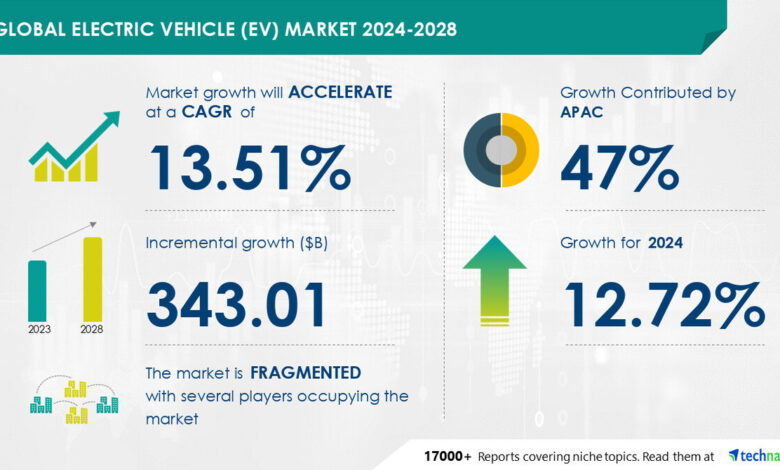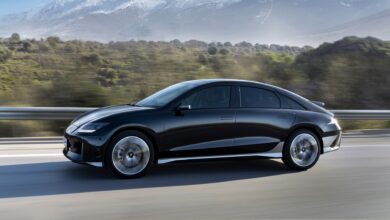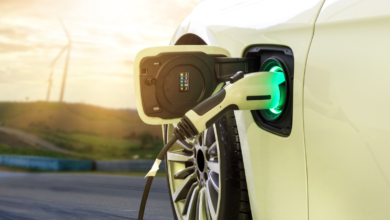Electric Vehicle (EV) Market size is set to grow by USD 343.01 billion from 2024-2028, Increasing demand and sales of electric vehicles, Technavio

NEW YORK, May 21, 2024 /PRNewswire/ — The global electric vehicle (EV) market size is estimated to grow by USD 343.01 billion from 2024-2028, according to Technavio. The market is estimated to grow at a CAGR of 13.51% during the forecast period.
For more insights on the forecast market size and historic data (2018 – 2022) – Download Free sample report in a minutes
|
Forecast period |
2024-2028 |
|
Base Year |
2023 |
|
Historic Data |
2018 – 2022 |
|
Segment Covered |
Type (BEV and PHEV), Charging (Normal charging and Super charging), and Geography (APAC, Europe, North America, South America, and Middle East and Africa) |
|
Region Covered |
APAC, Europe, North America, South America, and Middle East and Africa |
|
Key companies profiled |
Bayerische Motoren Werke AG, BYD Co. Ltd., Chery Automobile Co. Ltd., Chongqing Changan Automobile Co. Ltd., Dongfeng Motor Group Co. Ltd., Ford Motor Co., Geely Auto International Corporation, General Motors Co., Guangzhou Automobile Group Co. Ltd., Honda Motor Co. Ltd., Hyundai Motor Co., Mahindra and Mahindra Ltd., Mercedes Benz Group AG, Nissan Motor Co. Ltd., Renault SAS, SAIC Motor Corp. Ltd., Stellantis NV, Tesla Inc., Toyota Motor Corp., and Volkswagen AG |
Key Market Trends Fueling Growth
The rise in concern over emissions from fossil fuel vehicles has spurred a surge in demand for low-emission and fuel-efficient vehicles worldwide. This shift is primarily driven by escalating fuel prices and geopolitical tensions affecting oil exports. As a result, consumers are increasingly turning towards electric vehicles (EVs) to enhance energy security, cut fuel costs, and mitigate air pollution-related health issues.
The transition to EVs is further fueled by governmental policies, technological advancements, and growing awareness among consumers. Notably, BMW witnessed significant sales growth in fully electric vehicles in 2022, reflecting the broader trend towards EV adoption. With zero tailpipe emissions, both Battery Electric Vehicles (BEVs) and Plug-in Hybrid Electric Vehicles (PHEVs) are gaining traction among environmentally conscious consumers. The forecast for the EV market remains optimistic, driven by the collective efforts of governments and consumers to curb emissions and combat climate change.
Market Challenges
- The absence of adequate EV charging infrastructure presents a significant concern for both consumers and governments. With the anticipated rise in EV adoption, collaboration between governments and vendors is imperative to address this gap. In the US, the disparity between vehicles and charging stations is stark, with only 16 stations for EVs compared to 225 for traditional fuel vehicles.
- As EVs with larger batteries become prevalent, the need for more robust charging systems grows. However, the high costs associated with establishing charging stations pose a significant barrier. Residential AC chargers range from $250 to $1,500, while commercial AC chargers can cost up to $6,000. DC fast chargers are even pricier.
- Despite government support through funding and tax rebates, the gradual reduction of such incentives negatively impacts the EV charger market. Without substantial support, the growth of the EV market will be constrained by the limited charging infrastructure.
Research report provides comprehensive data on impact of trend, driver and challenges – Download Free sample report in a minutes
Segment Overview
- Type
- Charging
- 2.1 Normal charging
- 2.2 Super charging
- Geography
- 3.1 APAC
- 3.2 Europe
- 3.3 North America
- 3.4 South America
- 3.5 Middle East and Africa
1.1 BEV- The Battery Electric Vehicle (BEV) segment is poised for substantial growth in the coming years. BEVs, which run solely on battery power, are gaining traction in the market. Unlike Plug-in Hybrid Electric Vehicles (PHEVs), BEVs rely entirely on their batteries for propulsion. Popular models like the Tesla Model 3, Nissan LEAF, and Renault ZOE are driving this segment’s popularity. In 2018, the BEV segment was valued at USD 152.02 million, making it the largest segment in the electric vehicle market.
One of the main advantages of BEVs is their simplicity of manufacturing, which appeals to market players. With no need for traditional fuel systems, BEVs offer streamlined production processes. This ease of manufacturing contributes to the segment’s growth potential in the forecast period. As consumers increasingly prioritize environmentally friendly transportation options and governments implement stricter emissions regulations, the demand for BEVs is expected to rise steadily. This trend underscores the significance of the BEV segment in shaping the future of the automotive industry.
For more information on market segmentation with geographical analysis including forecast (2024-2028) and historic data (2018 – 2022) – Download a Sample Report
Research Analysis
The Electric Vehicle (EV) market is witnessing a significant shift with advancements in battery technology like Solid State Batteries driving down costs and enhancing performance. Fast charging infrastructure is rapidly expanding, catering to both Passenger Cars and Commercial Fleets. OEMs are increasingly investing in Battery Electric Transport, while Fuel Cell Electric Vehicles (FCEVs) gain traction in heavy-duty applications.
Lower battery costs and efficient charging solutions are accelerating the transition from traditional gasoline-powered vehicles to EVs. This shift is further supported by stringent emission regulations such as BSVI. Electric Two Wheelers and Off-Highway Vehicles are also adopting electrification, diversifying the market.
Traction battery pack development is key to enhancing range and performance across vehicle categories. Front, Rear, and All-Wheel Drive configurations cater to different driving needs, while advancements in Wheel, Suspension, Body, and Chassis design ensure optimal performance and safety.
The convergence of Machine Language, Artificial Intelligence, and Internet penetration is revolutionizing EVs, optimizing operations, and enhancing user experiences through intelligent sensors, software, and hardware integration.
Market Research Overview
The Electric Vehicle (EV) market is charging ahead with remarkable speed, driven by advancements in EV batteries and fast charging technology. Fuel cells are gaining traction, reshaping the landscape of electric cars. The diminishing cost of batteries is amplifying the appeal of EVs, outpacing traditional gasoline-powered vehicles.
As 5G rollouts accelerate, EV charging infrastructure is expanding, catering to the growing demand. Fluctuations in gasoline and diesel prices further sway consumers towards battery electric transportation for both heavy-duty and light-duty vehicles. With top speeds matching conventional counterparts, EVs are also making strides in off-highway vehicles and small electric vehicles segments. The future of transportation is electric, with the EV market poised for continued growth and innovation.
Table of Contents:
1 Executive Summary
2 Market Landscape
3 Market Sizing
4 Historic Market Size
5 Five Forces Analysis
6 Market Segmentation
- Type
- Charging
- Normal Charging
- Super Charging
- Geography
- APAC
- Europe
- North America
- South America
- Middle East And Africa
7 Customer Landscape
8 Geographic Landscape
9 Drivers, Challenges, and Trends
10 Company Landscape
11 Company Analysis
12 Appendix
About Technavio
Technavio is a leading global technology research and advisory company. Their research and analysis focuses on emerging market trends and provides actionable insights to help businesses identify market opportunities and develop effective strategies to optimize their market positions.
With over 500 specialized analysts, Technavio’s report library consists of more than 17,000 reports and counting, covering 800 technologies, spanning across 50 countries. Their client base consists of enterprises of all sizes, including more than 100 Fortune 500 companies. This growing client base relies on Technavio’s comprehensive coverage, extensive research, and actionable market insights to identify opportunities in existing and potential markets and assess their competitive positions within changing market scenarios.
Contacts
Technavio Research
Jesse Maida
Media & Marketing Executive
US: +1 844 364 1100
UK: +44 203 893 3200
Email: [email protected]
Website: www.technavio.com/
SOURCE Technavio



